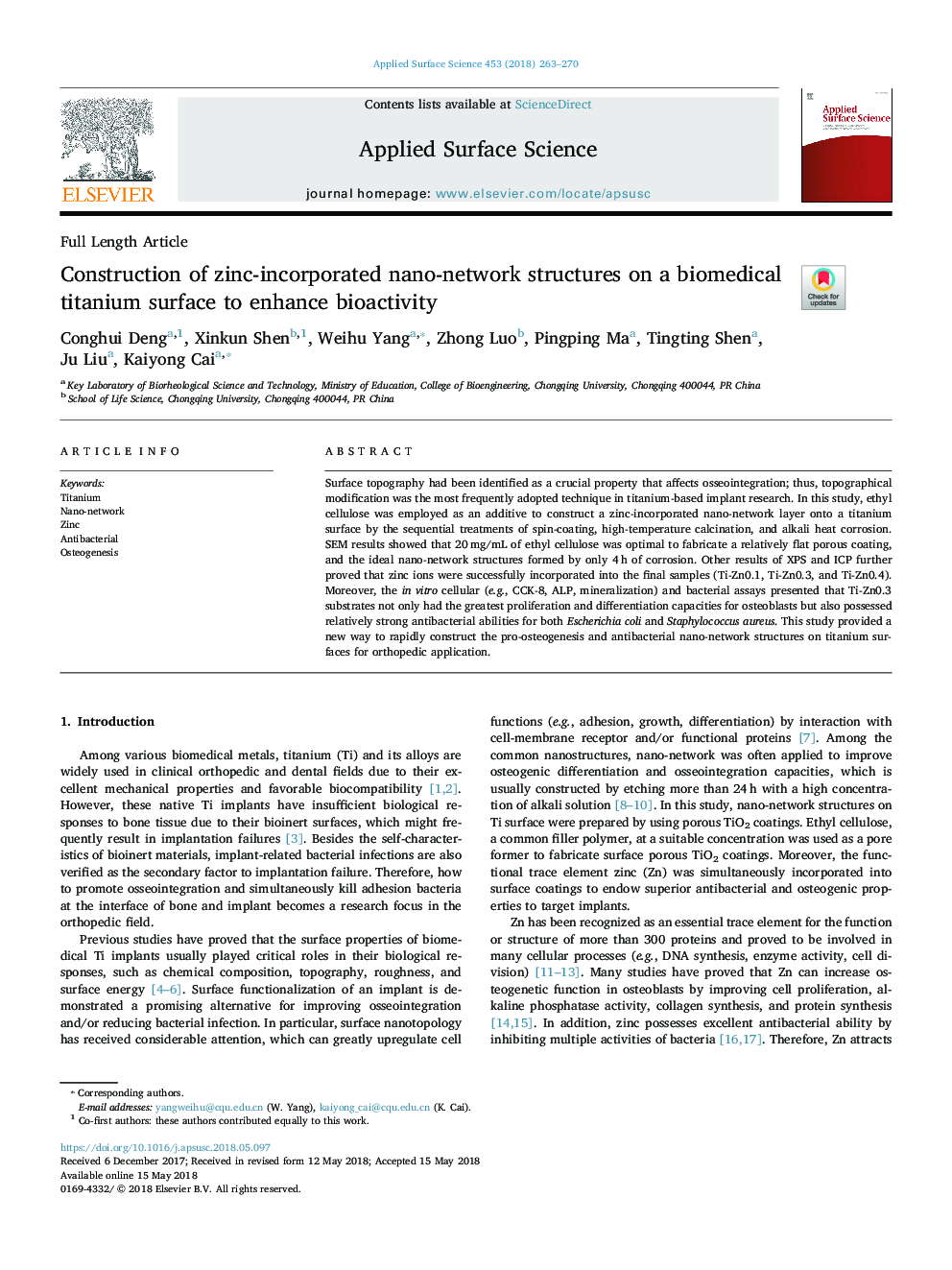| Article ID | Journal | Published Year | Pages | File Type |
|---|---|---|---|---|
| 7833363 | Applied Surface Science | 2018 | 8 Pages |
Abstract
Surface topography had been identified as a crucial property that affects osseointegration; thus, topographical modification was the most frequently adopted technique in titanium-based implant research. In this study, ethyl cellulose was employed as an additive to construct a zinc-incorporated nano-network layer onto a titanium surface by the sequential treatments of spin-coating, high-temperature calcination, and alkali heat corrosion. SEM results showed that 20â¯mg/mL of ethyl cellulose was optimal to fabricate a relatively flat porous coating, and the ideal nano-network structures formed by only 4â¯h of corrosion. Other results of XPS and ICP further proved that zinc ions were successfully incorporated into the final samples (Ti-Zn0.1, Ti-Zn0.3, and Ti-Zn0.4). Moreover, the in vitro cellular (e.g., CCK-8, ALP, mineralization) and bacterial assays presented that Ti-Zn0.3 substrates not only had the greatest proliferation and differentiation capacities for osteoblasts but also possessed relatively strong antibacterial abilities for both Escherichia coli and Staphylococcus aureus. This study provided a new way to rapidly construct the pro-osteogenesis and antibacterial nano-network structures on titanium surfaces for orthopedic application.
Related Topics
Physical Sciences and Engineering
Chemistry
Physical and Theoretical Chemistry
Authors
Conghui Deng, Xinkun Shen, Weihu Yang, Zhong Luo, Pingping Ma, Tingting Shen, Ju Liu, Kaiyong Cai,
